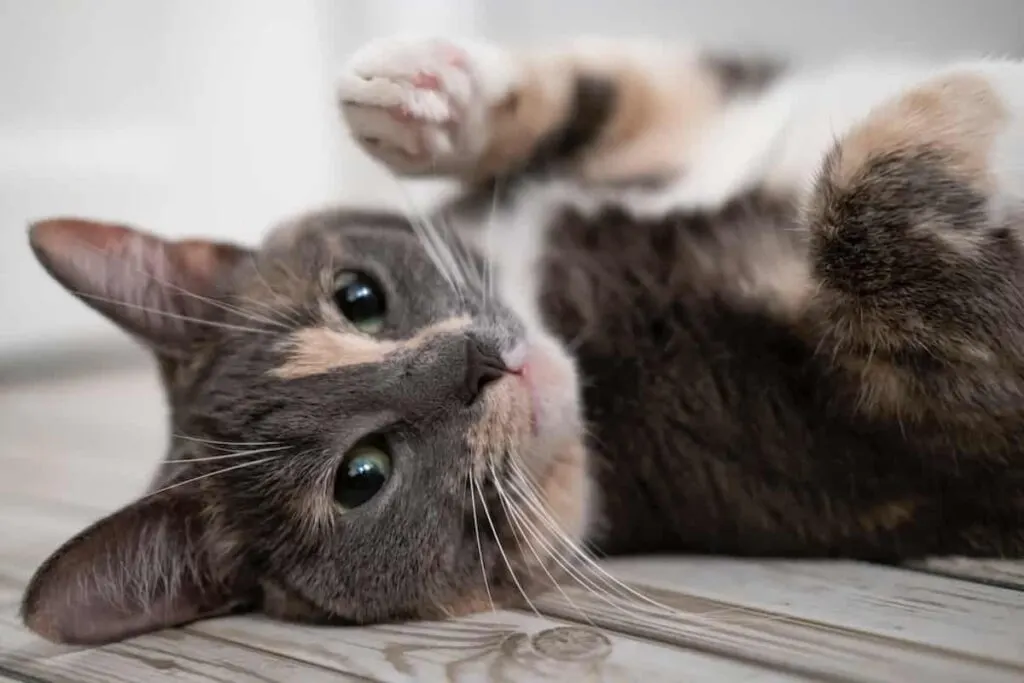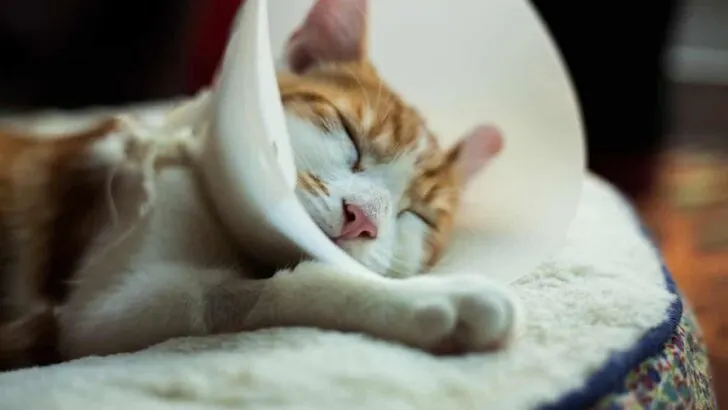Owning a cat comes with a ton of responsibility; it’s essential to recognize the signs of a severe injury, such as a broken back. This type of injury can have severe consequences if not treated properly and promptly.
Determining if your cat’s back is broken may not always be obvious, so it’s important to be aware of the various symptoms and how to react if you suspect a spinal injury. In this article, we will discuss the signs to look for in a cat with a broken back and how to handle this critical situation.

Recognizing the Symptoms
Here’s what should be observed while trying to recognize if a cat’s back is broken.
Physical Signs
Paying close attention to the cat’s posture and movement is essential. A cat with a broken back may display a change in posture, with a curved upward in severe cases (source).
Sometimes, the cat’s spine may appear abnormally arched or crooked. Palpating the cat’s body can also help identify swelling or tenderness, but this should be done with extreme care to avoid causing further pain or injury.
Behavioral Changes
Another crucial aspect to consider when identifying a broken back in cats is their behavior. Cats are known for being stoic creatures and tend to hide their pain. But, if a cat is experiencing severe discomfort from a broken back, it may become more vocal, expressing its pain through meows, growls, or hisses.
Additionally, they may refuse to move or have difficulty walking, opting to lie down in the same spot for extended periods. Appetite loss and abnormal bathroom habits can also point to back injuries.
Remember, identifying these symptoms in a cat is only the first step. Once any signs of a possible broken back are recognized, it’s essential to promptly consult a veterinarian to get a proper diagnosis and treatment plan.

What Could Cause a Broken Back
Several factors can contribute to a broken back in cats. One common cause is vehicular accidents, where the impact from a collision can severely damage the spine, resulting in spinal fractures or dislocations. You must monitor your cat closely if they’ve been involved in an accident and seek immediate veterinary care if you suspect a spinal injury.
Another potential cause of a broken back in cats is falling from significant heights, which can exert much force on the spine upon landing. Cats are generally agile and can land well from falls, but accidents can still occur, especially if the height is considerable or the landing surface is uneven.
Physical traumas, such as fights with other animals or blunt force trauma, can also result in spinal injuries. In these cases, it’s crucial to assess the extent of injuries and consult a veterinarian for appropriate treatment options.
Lastly, some underlying health issues or conditions can weaken the spine and increase the risk of fractures. For example, osteoporosis is a condition that leads to weakened bones and can make your cat more susceptible to spinal injuries. Regular veterinarian check-ups can help identify any underlying issues and ensure your cat’s overall well-being.
Immediate Actions to Take
When you suspect your cat may have a broken back, acting quickly and calmly is crucial to minimize the risk of further injury. The first step is gently immobilizing your cat, preventing them from moving around too much. You can use a towel or blanket to wrap them, making sure they’re adequately supported and unable to twist or bend their spine.
Next, getting your cat to a veterinarian as soon as possible is essential. When dealing with a potential back fracture, time is of the essence. The earlier the diagnosis and treatment, the better the chances of recovery. Call your vet immediately to inform them of the situation and seek their advice on the best action.
While transporting your cat to the vet, ensure they remain immobilized and comfortable. Keep them on a flat surface, like the inside of a pet carrier or a sturdy cardboard box with a soft towel inside. Ensure your cat is adequately supported and restrained in the vehicle, as sudden turns or stops could worsen their injury.
Also, try to remember any details surrounding the incident that may have caused the injury to share with the veterinarian. This information can be invaluable in helping determine the extent of the injury and the most suitable treatment for your cat.

Seeking Veterinary Help
If you suspect your cat may have a broken back, seeking veterinary help is crucial. A prompt response might significantly affect a cat’s recovery and overall well-being.
Diagnosis and Tests
The veterinary surgeon will start by conducting a thorough physical examination of your cat to determine the severity and location of the injury. They’ll assess for any other injuries, signs of shock, or internal bleeding.
The vet may recommend diagnostic tests to confirm the spinal injury after the initial examination. Some of these tests could include:
- X-rays – to check for fractures or other abnormalities in the spine
- Magnetic Resonance Imaging (MRI) or Computed Tomography (CT) scan – for detailed image of the spinal cord and surrounding structures
- Neurological examination – to assess motor and sensory function
Treatment Options
Once the diagnosis is confirmed, the treatment plan for a cat will depend on the severity of the spinal injury and any additional injuries present. In some cases, conservative or non-surgical treatments may be adequate.
Non-surgical approaches may consist of the following:
- Medications for pain and inflammation management
- Cage rest or restricted activity to prevent further injury
- Physical therapy to help regain mobility and muscle strength
However, surgical intervention might be necessary in more severe cases to stabilize the spine and minimize neurological damage. After surgery, a cat may require ongoing care and rehabilitation, including physical therapy, medications, and regular veterinary check-ups to monitor the healing process.

Recovery and Post-Treatment Care
Below is how you can expect the home care and ongoing physical therapy to go:
Home Care
After a cat’s spine has been treated for a fracture, you must provide a safe and comfortable environment at home. Setting up a quiet space with a cozy bed and easy access to food, water, and a litter box is essential. Please follow the vet’s recommendations for pain management or inflammation medications.
It’s critical to monitor a cat’s condition and watch for any signs of distress or worsening symptoms. If you notice any changes, you should contact a vet immediately. Also, you must prevent your cat from jumping or engaging in any activities that may strain its back.
Physical Therapy
A cat may benefit from physical therapy during their recovery. This will help them regain strength and mobility in the affected area. Some vets may even suggest therapy.
Some physical therapy exercises may include:
- Gentle joint mobilization
- Balancing exercises
- Assisted walking
- Targeted massage
Sticking to the therapy schedule and consistently working with a cat will help maximize their recovery process. Communicating with the therapist and your vet about any concerns, progress, or setbacks is critical.
Preventing Future Injuries
Preventing future back injuries in our cats involves keeping them secure, maintaining a healthy weight, and providing them with a safe home environment. By being aware of potential dangers and taking these simple precautions, we can significantly reduce the risk of back injuries in our feline companions.
Providing a safe and comfortable living environment is also a good idea. Ensure your home is free from hazards like loose wires and cords, which cats can tangle in or trip over. Additionally, having sturdy and stable cat furniture, such as cat trees or perches with non-slip surfaces, can reduce the chances of falls and accidents.

My name is James, and welcome to FAQCats!
Along with our team of cat owners, expert pet enthusiasts, and pet professionals, we aim to write engaging helpful, engaging content about cats. At FAQCats we strive to provide content that’s accurate and fun to read. Our team writes about everything related to cats; even the most complex of topics. Through extensive research and caring for our own fur-pals, we’re able to provide something cat owners worldwide will love. Have a look around, and leave us feedback anytime!

